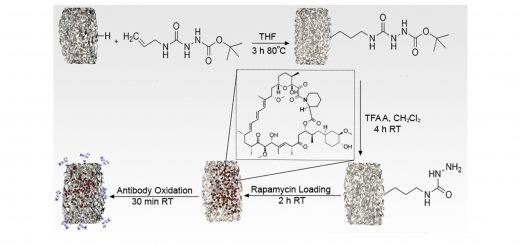New paper in Advanced Materials
Crystal and colleagues have recently published a paper in Advanced Materials: Silicon-Nanotube-Mediated Intracellular Delivery Enables Ex Vivo Gene Editing
Engineered nano–bio cellular interfaces driven by vertical nanostructured materials are set to spur transformative progress in modulating cellular processes and interrogations. In particular, the intracellular delivery—a core concept in fundamental and translational biomedical research—holds great promise for developing novel cell therapies based on gene modification. This study demonstrates the development of a mechanotransfection platform comprising vertically aligned silicon nanotube (VA-SiNT) arrays for
ex vivo gene editing. The internal hollow structure of SiNTs allows effective loading of various biomolecule cargoes; and SiNTs mediate delivery of those cargoes into GPE86 mouse embryonic fibroblasts without compromising their viability. Focused ion beam scanning electron microscopy (FIB-SEM) and confocal microscopy results demonstrate localized membrane invaginations and accumulation of caveolin-1 at the cell–NT interface, suggesting the presence of endocytic pits. Small-molecule inhibition of endocytosis suggests
that active endocytic process plays a role in the intracellular delivery of cargo from SiNTs. SiNT-mediated siRNA intracellular delivery shows the capacity to reduce expression levels of F-actin binding protein (Triobp) and alter the cellular morphology of GPE86. Finally, the successful delivery of Cas9 ribonucleoprotein (RNP) to specifically target mouse Hprt gene is achieved. This NT-enhanced molecular delivery platform has strong potential to support gene editing technologies.




